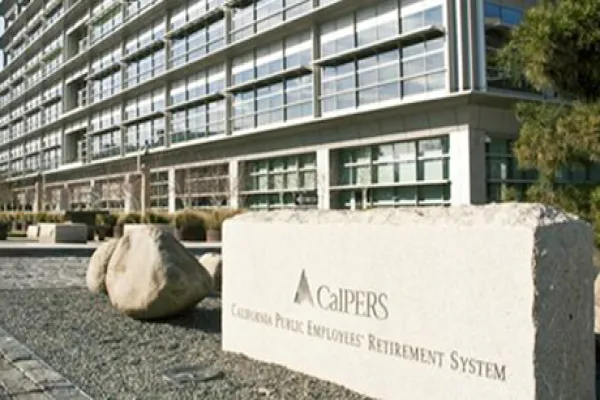Catherine Keating is clearly proud of Commonfund. The fifth president and CEO of the $25 billion asset manager for nonprofits likes to boast that it preceded David Swensen, CIO of Yale Investment Management Co. since 1985, in building diversified endowment portfolios.
The Common Fund for Nonprofit Organizations was established in 1971 with a $2.8 million grant from the Ford Foundation, a major funder of higher education in the 1960s, to help universities and other not-for-profit institutions diversify portfolios that were then almost entirely invested in bonds. By the end of that year, 72 endowments had invested $63 million with the fund.
Keating joined Wilton, Connecticut–based Commonfund in 2015 after almost two decades with J.P. Morgan Asset Management, where she was most recently head of investment management for the Americas, and held a variety of other roles including CEO of the firm’s private bank. She believes her new employer was also first in the now crowded field of outsourced chief investment officers, or OCIOs. “That’s how we were founded,” Keating says, “as the CIO office for the organization that either didn’t have one or wanted more support for their office.” Commonfund manages roughly half of its assets for OCIO clients and the rest in private funds for others.
Keating recently visited Institutional Investor’s New York office to chat with Senior Writer Frances Denmark about the challenges and the future of endowment investing.
How can nonprofits meet the 7 percent return target they require to fund their operations, given the low-interest-rate environment?
You have to look for portfolio accelerators in a decelerating world. We are suggesting that our clients invest in private capital at the top of their policy ranges right now to try to capture the potential premium associated with private investments. This is critical in a low-return environment.
We’re also focused on optimizing active portfolio management, which is also risk management. As you get into the later years of a market cycle, there is more differentiation between companies. Higher-quality companies with higher-quality balance sheets and cash flows tend to do better. You’re seeing that already in the high-yield market, where there has been a bifurcation between the higher-quality high-yield companies and the lower-quality companies.
Where does Commonfund stand on the active-versus-passive debate?
Commonfund is a longtime believer in active management for our clients, not exclusively but generally. But before picking managers and stocks, you need to think about a couple of things. The first is, what is your time horizon? You have to have patience because no active manager outperforms every single year. If your time horizon is just a few years, it may be more appropriate to be passive.
The second is that costs matter; they eat into returns. So if you want to be in active management, you should try to minimize your costs. Where can you get economies of scale? Where can you negotiate with a manager? When we pool all of our clients’ assets together, we have far greater buying power than they have on their own.
The debate has also changed. It used to be a binary decision: passive or active. Rather than get caught up in the debate, today we would say that alpha and beta — alpha being the skill and beta being the return that you just get from the markets — are components of all investments, and we budget for both alpha and beta when constructing portfolios for our clients.
We believe that we have developed the tools — rigorous factor and peer analysis — to identify managers who truly deliver uncorrelated, skill-based, diversifying returns. We can source beta, or market returns, for almost nothing today in the passive space. These tools help us to optimize both portfolios and costs.
Where do you see attractive new investment opportunities for your clients?
We believe that the addition of two billion people into the middle class in emerging markets is the most important demographic trend of our lifetimes, with investment implications across portfolios, from the largest multinationals to local private companies. In emerging markets we are particularly attracted to private capital, where we see compelling entry points, low leverage and exposure to the market segments — technology, retail, health care and services — that we believe will benefit most from growing middle-class consumption.
How has your hedge fund portfolio evolved during the past few years?
We have been investing in hedge funds for more than three decades at Commonfund, and a lot has changed over the years. Hedge fund industry assets have grown to $3 trillion, and the industry has consolidated, so that 2 percent of funds now manage close to half the assets. Most significantly, alpha has diminished, from high single digits before the financial crisis to almost nothing since.
In the early years hedge funds were pioneers; in recent years many have become settlers. We believe there is a role for hedge funds in portfolios today, if they provide sources of returns that are uncorrelated to stocks and bonds. We think of these managers as the new pioneers that are pushing out the efficient frontier — offering different sources of return for better portfolio diversification. It’s a relatively small set of managers who tend to be capacity-constrained and often employ niche strategies. Pioneering is not for everyone, but we have long been pioneers at Commonfund. Pioneering may take us further away from industry benchmarks. We may even develop our own benchmark.
What is the most surprising question you hear from your members?
When I joined Commonfund last year, I went on a listening tour. And in every city I fielded a question about ESG [environmental, social and governance] factors, and more specifically about fossil fuels and their implications for portfolios. It was the first time I had ever fielded a question about fossil fuels, and it made me realize that there was something different about our clients and about 2015.
Our clients are different: They are nonprofit and public sector entities, some of the most sophisticated investors in the world with the longest time horizons. Last year was different too, with 175 countries reaching a climate accord in Paris. Our clients invest today in a world that aspires to be lower-carbon. But they worry that if they screen out certain sectors of the market or segments of the economy, they will have a smaller investment universe that reduces opportunity for returns and increases volatility. Until now, most investors addressing these issues have advocated either divestment from fossil fuels or engagement. Divestment is immediate and blunt, while engagement is long-term and diffuse. We wondered if there was a better solution. We concluded — somewhat to our surprise — that there is, and that one could construct a portfolio that could substantially reduce exposure to reserves and emissions by as much as 80, 90 percent without materially altering risk and return.
While we don’t know the precise time horizon for the change to a lower-carbon economy, we think it will be measured in years as well as decades, and that some of the change has already begun. For example, last year was the first time gas replaced coal as the biggest producer of electricity in the U.S.
At the same time, the portfolio can include the kinds of positive investments in efficiency, technology, alternative energy and sustainability that will support a lower-carbon world over time. It has been a very interesting journey for us on the spectrum of fiduciary responsibility, and it’s one that we were led to by our clients.






